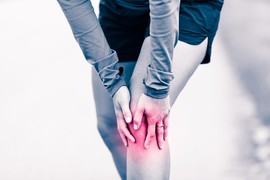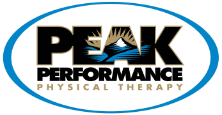Injury to the anterior cruciate ligament (ACL) of the knee is one of the most common and devastating injuries that commonly affects athletes that participate in demanding sports, such as soccer, football and basketball. ACL tears are responsible for approximately 64% of knee injuries in athletes that participate in pivoting and cutting sports, resulting in up to 200,000 ACL reconstructions each year.
Let’s take a look at the anatomy of the knee joint to better understand the role of the ACL. The knee joint is comprised of three bones – the long thigh bone (femur), the shin bone (tibia), and the kneecap (patella).
 These bones are held in place by four main ligaments including the medial and lateral collateral ligaments, and the anterior and posterior cruciate ligaments. The collateral ligaments help to control side-to-side motion, while the cruciate ligaments control back and forth motion of the knee joint. The ACL in particular prevents the shin bone from sliding in front of the thigh bone, and also provides rotational stability to the knee joint.
These bones are held in place by four main ligaments including the medial and lateral collateral ligaments, and the anterior and posterior cruciate ligaments. The collateral ligaments help to control side-to-side motion, while the cruciate ligaments control back and forth motion of the knee joint. The ACL in particular prevents the shin bone from sliding in front of the thigh bone, and also provides rotational stability to the knee joint.
About 50% of ACL injuries occur along with damage to other knee joint structures including meniscus and articular cartilage, as well as other ligaments. ACL injuries are considered sprains and are graded based on the severity of the injury:
Grade I – (mild damage) - whereby the ligament has been stretched slightly but is still able to provide stability to the knee.
Grade II (partial tear) – moderate damage to the ACL, whereby the ligament has been stretched and becomes loose.
Grade III (complete tear) – severe damage to the ACL, whereby the ligament has been severed into two pieces and is unable to provide stability to the knee. Most ACL injuries fall into this category.
Injury to the ACL can occur in various ways including:
- Rapidly changing directions
- Suddenly stopping
- Slowing down abruptly when running
- Landing improperly after jumping
- Direct blow to the area (i.e. tackle in football)
Symptoms of ACL injury often include:
- “Popping” noise and a feeling that the knee is going to give out
- Swelling and pain within 24 hours of the injury
- Decreased range of motion of the knee
- Tenderness of the knee joint
- Discomfort and difficulty with walking
Diagnosis of ACL injury is often accomplished with a thorough history and physical examination of the area. However, in some cases imaging modalities such as X-ray and magnetic resonance imaging (MRI) may be used to confirm diagnosis.
Treatment for ACL injury depends on the needs of the patient. In many cases, young athletes will require surgery in order to safely return to sports. On the other hand, older individuals that are less active may be able to rehabilitate their injury with non-surgical options including bracing and physical therapy.
Whether treatment for your ACL injury involves non-surgical options or surgical options, physical therapy plays a crucial role in getting you back to your pre-injury activities. An adequate non-surgical treatment plan using physical therapy will help to rebuild strength, control, and motion of the knee joint. After surgery, a physical therapy treatment plan will initially focus on regaining knee range of motion, followed by a strengthening, balance, and proprioception program aimed at protecting the new ligament, which gradually increases the stress placed on the new ligament. The last phase of the physical therapy program works on functional movements that are specific to the individual’s sport.
If you have suffered an ACL injury you may benefit from physical therapy. Undergoing a comprehensive evaluation by a physical therapist at Peak Performance Physical Therapy is one of the best ways to properly rehabilitate your knee after an ACL injury. After the assessment, our physical therapists will create a program that is specific to your needs, and set you on the right path toward optimal functioning of your knee joint.
References
1. Anterior Cruciate Ligament (ACL) Injuries - OrthoInfo - AAOS. Orthoinfo.aaos.org. 2018. Available at: https://orthoinfo.aaos.org/en/diseases--conditions/anterior-cruciate-ligament-acl-injuries/. Accessed June 11, 2018.
2. Kiapour A, Murray M. Basic science of anterior cruciate ligament injury and repair. Bone Joint Res. 2014;3(2):20-31. doi:10.1302/2046-3758.32.2000241.
3. Sherman S, Raines B, Naclerio E. Management of anterior cruciate ligament injury? What's in and what's out?. Indian J Orthop. 2017;51(5):563. doi:10.4103/ortho.ijortho_245_17.
